Understanding Cosmic Entities Across Traditions
Fate, Free Will, and the higher purpose of the Soul
In the heart of winter's shadow, where light and darkness meet, what silent truth is whispered in the moment of their fleeting embrace?
Date: December 21st
The Winter Solstice, within the framework of QMC, Natural Law, and sovereignty, presents a profound opportunity for reflection, renewal, and the reaffirmation of one’s personal path and autonomy. It's a time to align with the deeper rhythms of nature, embrace one’s inner wisdom and sovereignty, and prepare for the journey ahead with renewed purpose and understanding.
But first some obstacles
The General Law: A Multifaceted Concept in Esoteric Philosophy
The concept of the General Law, often explored in esoteric Christian teachings and other spiritual traditions, represents a complex and multifaceted idea central to understanding human existence and spiritual evolution. At its core, the General Law embodies the myriad unseen forces and natural laws that govern the physical and metaphysical realms, acting as a cosmic framework within which all life operates. It encompasses not only the physical laws of nature, as understood by science, but also deeper spiritual and moral laws that are believed to influence human behavior, consciousness, and the soul’s journey. This General Law is seen as a guiding principle, maintaining the cosmic order and balance, ensuring that the universe and life within it follow a certain order and progression. From a metaphysical perspective, it is often perceived as a boundary or limitation, a set of constraints within which individuals must navigate their spiritual paths.
The General Law in Human Experience and Spiritual Practice
In the realm of human experience, the General Law plays a crucial role, manifesting as the collective conditions and circumstances that shape our lives and spiritual journeys. It is often viewed as a challenge or a set of lessons that souls must understand and integrate to evolve and transcend. In this sense, the General Law serves not only as a constraint but also as a catalyst for growth, prompting individuals to seek deeper understanding, overcome personal limitations, and align more closely with universal truths. Esoteric teachings and spiritual practices often emphasize the importance of recognizing and working within the General Law, encouraging individuals to develop awareness, discipline, and compassion. By understanding and aligning with these universal principles, it is believed that one can transcend the more restrictive aspects of the General Law, achieving greater spiritual freedom and enlightenment. This journey of alignment and transcendence is central to many spiritual paths, as it involves navigating the complex interplay between fate, free will, and the higher purpose of the soul.
Could be seen as quantum entanglements or patterns that inhibit higher consciousness evolution.
Cosmic Entities Across Traditions
Archons: Enigmatic Entities in Gnostic Thought
In Gnostic cosmology, Archons occupy a significant and enigmatic position, often depicted as powerful entities that influence the material world and human existence. The term 'Archon' is derived from the Greek word meaning 'ruler' or 'lord', aptly reflecting their perceived role in the Gnostic narrative. In this framework, Archons are seen as the builders or guardians of the physical universe, often associated with the material aspects of creation and sometimes viewed as impediments to spiritual enlightenment. They are believed to be subordinate to the Demiurge, a lesser god-like figure who, in many Gnostic texts, is responsible for the creation of the physical world. The Archons, in their governance of the material realm, are often depicted as preventing souls from realizing their true divine nature and potential. This portrayal highlights a dualistic view of the universe, where the spiritual realm is seen as pure and enlightened, in contrast to the corrupt and illusionary physical world governed by the Archons.
Archons in Spiritual and Metaphysical Contexts
In the metaphysical landscape, the concept of Archons extends beyond their Gnostic origins, symbolizing the broader challenges and limitations faced on the path to spiritual awakening. They represent the forces, both external and internal, that bind individuals to the material world and egoic desires, thereby obstructing spiritual growth and self-realization. This interpretation makes the Archons relevant in various spiritual practices, where they symbolize the struggle against ignorance, ego attachment, and the illusions of the physical realm. In confronting and understanding the influence of Archons, individuals are believed to gain deeper insight into the nature of reality, their own consciousness, and the obstacles to achieving a higher state of being. The journey of overcoming or transcending these archonic influences is seen as integral to the path of spiritual evolution, where enlightenment is achieved through the realization of one's innate divinity and liberation from material constraints. As such, the Archons serve as both metaphors for the spiritual journey and as embodiments of the challenges inherent in the quest for higher consciousness and liberation.
Description: In Gnostic tradition, Archons are seen as powerful beings that impede spiritual awakening.
Metaphysical Perspective: Represents the barriers within the human psyche that hinder enlightenment.
Philosophical View: A symbol of the struggles between knowledge and ignorance, freedom and enslavement.
Scientific Angle: Could be likened to psychological patterns that limit cognitive and perceptual capabilities.
Spiritual Interpretation: Challenges to be overcome for spiritual liberation.
Representations of negative thought patterns or energies at a quantum level that limit spiritual growth.
Lords of Destiny: Guardians of Fate in Hermeticism
In Hermetic philosophy, the concept of the "Lords of Destiny" holds a profound and enigmatic place. These entities, often envisioned as cosmic guardians or overseers, are believed to preside over the destinies of individuals and the unfolding of events in the universe. In the intricate tapestry of Hermetic thought, which merges mysticism with a system of natural laws, these Lords are seen as the executors of cosmic order and balance. They operate within the framework of both fate and free will, maintaining the delicate equilibrium between preordained events and personal choices. This concept reflects the Hermetic principle of 'as above, so below,' suggesting a mirroring of cosmic patterns in human affairs. The Lords of Destiny are thus viewed as intermediaries between the divine will and the mortal world, guiding the soul's journey according to the greater cosmic plan while allowing space for personal growth and spiritual evolution.
Interpreting the Lords of Destiny in Modern Contexts
In contemporary spiritual and metaphysical explorations, the Lords of Destiny are often interpreted symbolically, representing the complex interplay of forces that shape our lives. They embody the notion that while certain aspects of our existence may be predestined, there is always room for individual agency and transformation. This concept resonates with the idea of karma in Eastern philosophies, where past actions influence current circumstances, yet the path forward is shaped by present choices and intentions. In personal spiritual practice, understanding the role of the Lords of Destiny can lead to a deeper acceptance of life's unfolding journey, encouraging individuals to seek harmony with the natural flow of events while actively participating in their own destiny. The Lords of Destiny thus serve as a reminder of the intricate dance between destiny and free will, urging seekers to find their unique path within the vast cosmic order. Their symbolic presence in spiritual narratives offers insight into the mysteries of fate and the empowerment of conscious choice, guiding individuals toward a greater understanding of their place in the universe.
Description: Entities governing fate and personal destiny in Hermeticism.
Metaphysical Perspective: Symbolize the interconnectedness of all actions and their consequences in the universe.
Philosophical View: Reflect on the human understanding of freedom versus predestination.
Scientific Angle: Could be viewed as deterministic laws governing the universe.
Spiritual Interpretation: Guides in the journey of life, helping to navigate one’s spiritual path.
Quantum fields or energies that influence life paths, seen as challenges to be navigated for spiritual growth.
Predator/Fliers: Mysterious Forces in Shamanism and Castaneda's Teachings
The concept of Predator/Fliers, as introduced in the works of Carlos Castaneda and rooted in shamanic traditions, presents a complex and intriguing aspect of metaphysical thought. In Castaneda's narrative, these entities are described as cosmic forces or beings that feed on human energy, particularly the energy of awareness and consciousness. They are depicted as external influences that can manipulate human perception, keeping individuals bound to a limited view of reality. The notion of Predator/Fliers aligns with shamanic views of entities or spirits that interact with the human world in various, often challenging ways. In this context, these entities represent more than just physical beings; they are symbols of the forces and influences that can divert or consume one's spiritual and mental energies, leading to a loss of personal power and a diminished ability to perceive beyond the ordinary.
Understanding and Overcoming the Influence of Predator/Fliers
In a broader metaphysical and spiritual context, the concept of Predator/Fliers can be interpreted as a metaphor for the internal and external challenges that hinder spiritual awakening and self-realization. These challenges might include societal conditioning, psychological traps, and the myriad distractions of the material world that can lead to a disconnection from one's deeper self and the broader universe. The teachings in shamanism and Castaneda’s work often focus on the importance of awareness, inner strength, and clarity in overcoming these influences. Practices such as meditation, mindfulness, and disciplined self-reflection are seen as tools to reclaim one's energy and awareness from these predatory influences. By recognizing and consciously working to free oneself from these limiting forces, individuals can embark on a path of greater spiritual freedom, expanded perception, and deeper understanding of the true nature of reality. This journey of liberation and empowerment is central to the teachings of shamanism and Castaneda, offering a pathway to transcend the limitations imposed by these mysterious entities.
Description: Predatory forces that feed on human energy and awareness.
Metaphysical Perspective: Representations of energy-draining thought patterns and behaviors.
Philosophical View: Examines the nature of human vulnerability and resilience.
Scientific Angle: Analogous to parasitic or symbiotic relationships in nature.
Spiritual Interpretation: Challenges to overcome for achieving higher states of consciousness.
Energetic patterns or entities in the QMC that represent psychological and spiritual challenges.
The Evil Magician: A Central Figure in Gurdjieff's Spiritual Philosophy
In the teachings of George Ivanovich Gurdjieff, a mystic and spiritual teacher, the metaphor of "The Evil Magician" serves as a poignant illustration of the human condition and the challenges faced on the path to higher consciousness. Gurdjieff, known for his enigmatic teachings that blended Eastern mysticism with Western thought, used this allegory to depict how humans live in a state of spiritual sleep, under the spell of an illusory world. The Evil Magician symbolizes the myriad distractions, illusions, and misconceptions that cloud human perception and keep individuals from realizing their true potential and nature. According to Gurdjieff, this magician casts a spell that keeps people in a state of unconsciousness, where they are unaware of their true selves and the deeper realities of existence. This state of sleep is maintained through mechanical living, where individuals go through life without genuine awareness or understanding of themselves or the world around them.
Overcoming the Illusions of the Evil Magician
In Gurdjieff's framework, awakening from the spell of the Evil Magician involves a rigorous process of self-discovery, inner work, and the development of higher levels of consciousness. This process, often referred to as 'The Work,' requires individuals to question their ingrained beliefs, habits, and perceptions, challenging the illusions that have been accepted as reality. Gurdjieff emphasized the importance of self-observation, conscious effort, and sincere seeking of truth as means to break free from the magician's spell. He taught that by developing presence, self-remembrance, and intentional living, one can begin to perceive the subtle manipulations of the Evil Magician and gradually awaken to a more authentic and conscious existence. This awakening is not just an intellectual realization but a profound transformation that encompasses emotional, mental, and spiritual aspects of the individual. Gurdjieff's teachings, through the allegory of the Evil Magician, offer a pathway to transcend the limitations of ordinary consciousness and achieve a state of greater awareness, freedom, and connection to the deeper truths of existence.
Description: A metaphor for deceptive aspects of reality.
Metaphysical Perspective: Symbolizes the illusionary nature of the material world.
Philosophical View: Encourages critical thinking about perception and reality.
Scientific Angle: Resonates with theories in quantum mechanics about the nature of observation and reality.
Spiritual Interpretation: Represents the journey from illusion to enlightenment.
Symbolic of the deceptive nature of lower-level quantum states that prevent realization of higher consciousness.
Shaitans in Sufism: Symbolic Representations of Inner Struggle
In the mystical tradition of Sufism, Shaitans (often equated with devils or evil spirits in Islamic theology) are perceived as more than just malevolent supernatural beings. They hold a deeper, symbolic significance, representing the internal and external forces that lead individuals away from the path of spiritual truth and enlightenment. In Sufism, which emphasizes the inner, mystical journey towards union with the Divine, Shaitans symbolize the ego-driven impulses, negative thoughts, and lower desires that hinder a person's spiritual progress. They are seen as manifestations of the nafs, the lower self, which is driven by base desires and egotistical tendencies. The struggle against the Shaitans is therefore not just a battle against external evil forces but more importantly, an internal struggle for purification and mastery over one's lower nature. This struggle is central to the Sufi path of self-transformation and spiritual awakening.
Overcoming the Influence of Shaitans in Sufi Practice
The process of overcoming the influence of Shaitans in Sufism involves a deep and ongoing journey of self-reflection, discipline, and devotion. Sufi practices such as Dhikr (remembrance of God), meditation, and spiritual guidance under a Sufi master are aimed at transcending the ego and aligning the soul with divine qualities. Sufis believe that by cultivating qualities such as love, compassion, patience, and humility, one can counteract the negative influences of the Shaitans. This path requires sincere effort to purify one's heart and mind, striving to embody the attributes of the Divine and distancing oneself from egoistic and materialistic pursuits. The ultimate goal is to achieve a state of spiritual purity and closeness to God, where the whispers and temptations of the Shaitans lose their power. Through this transformative journey, Sufis seek to attain a deeper understanding of themselves and their place in the cosmos, transcending the illusory trappings of the material world and the lower self.
Description: Evil spirits leading humans astray.
Metaphysical Perspective: Represent internal conflicts and moral dilemmas.
Philosophical View: Explores the nature of evil and moral choices.
Scientific Angle: Can be seen as destructive psychological patterns.
Spiritual Interpretation: Tests on the path to spiritual purity.
Negative quantum energies that represent inner and outer obstacles to spiritual purity and understanding.
The Winter Solstice: A Time for Reflection and Transformation
6. Embracing the Darkness and Light:
Celestial Significance: The Winter Solstice, the shortest day of the year, symbolizes the interplay of darkness and light, death and rebirth.
Opportunity for Introspection: It’s a time to reflect on these cosmic entities and their impact on our spiritual journey.
7. Transformative Practices:
Meditation and Contemplation: Utilize this time for deep meditation, contemplating the nature of these entities and their relevance in your life.
Rituals and Ceremonies: Engage in rituals that honor both the darkness and the forthcoming light, acknowledging the lessons and challenges presented by these entities.
Conclusion: As we observe the Winter Solstice, let us embrace the wisdom offered by these diverse cosmic entities. They serve as reminders of our journey through the cycles of darkness and light, guiding us toward greater understanding and spiritual awakening. This solstice, let us reflect on their teachings, integrating their lessons into our lives as we prepare for the return of the light.
Table of Entities Across Traditions and Their Interpretations in QMC
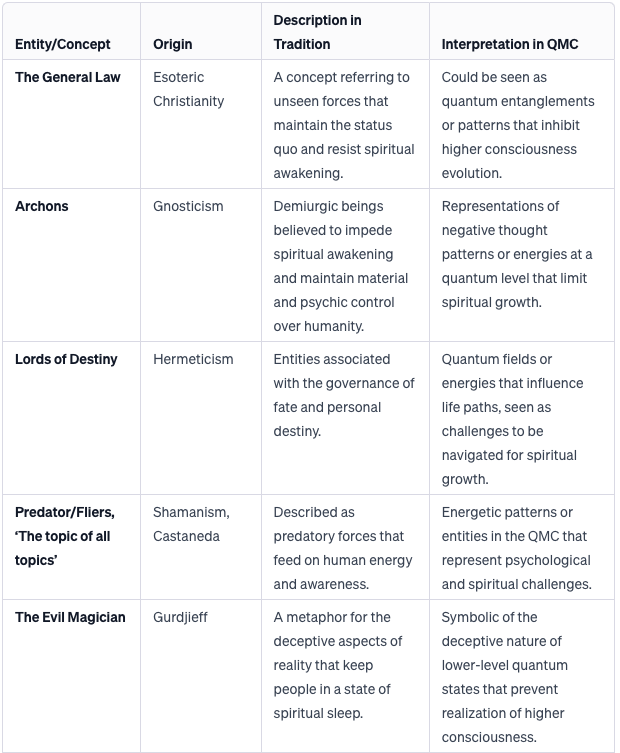
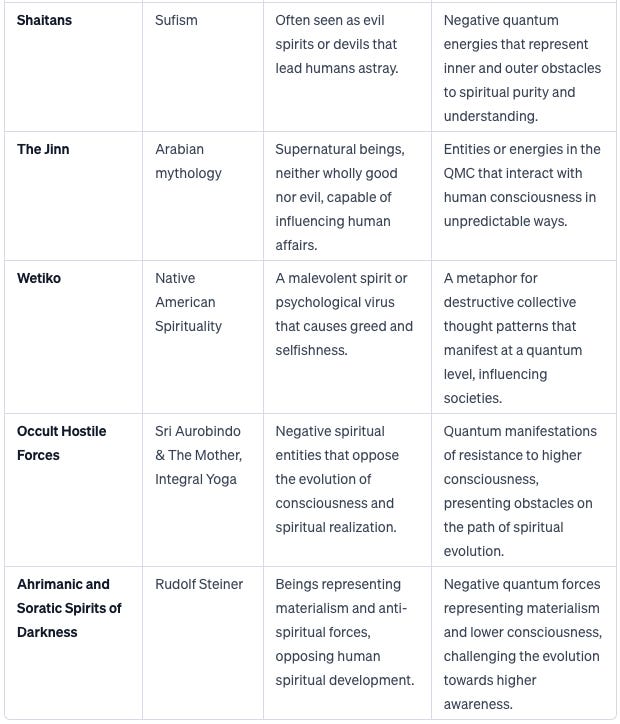
Understanding These Entities in QMC
Metaphorical and Symbolic: In QMC, these entities are often understood metaphorically, representing various types of challenges, both internal (like personal fears and limitations) and external (such as societal structures and collective beliefs), that individuals face on their spiritual journey.
Diverse Interpretations: These concepts are interpreted diversely in QMC, integrating quantum theory to explain how these negative energies or patterns might operate at a subtle, energetic level.
Tools for Growth: While these entities or forces are seen as challenges or obstacles, they are also viewed as essential aspects of the spiritual path, offering opportunities for growth, learning, and transcendence.
The exploration of these entities within the QMC framework reflects a deep engagement with the complexities of spiritual evolution, acknowledging the myriad ways in which various traditions understand and conceptualize the challenges on the path to higher consciousness.


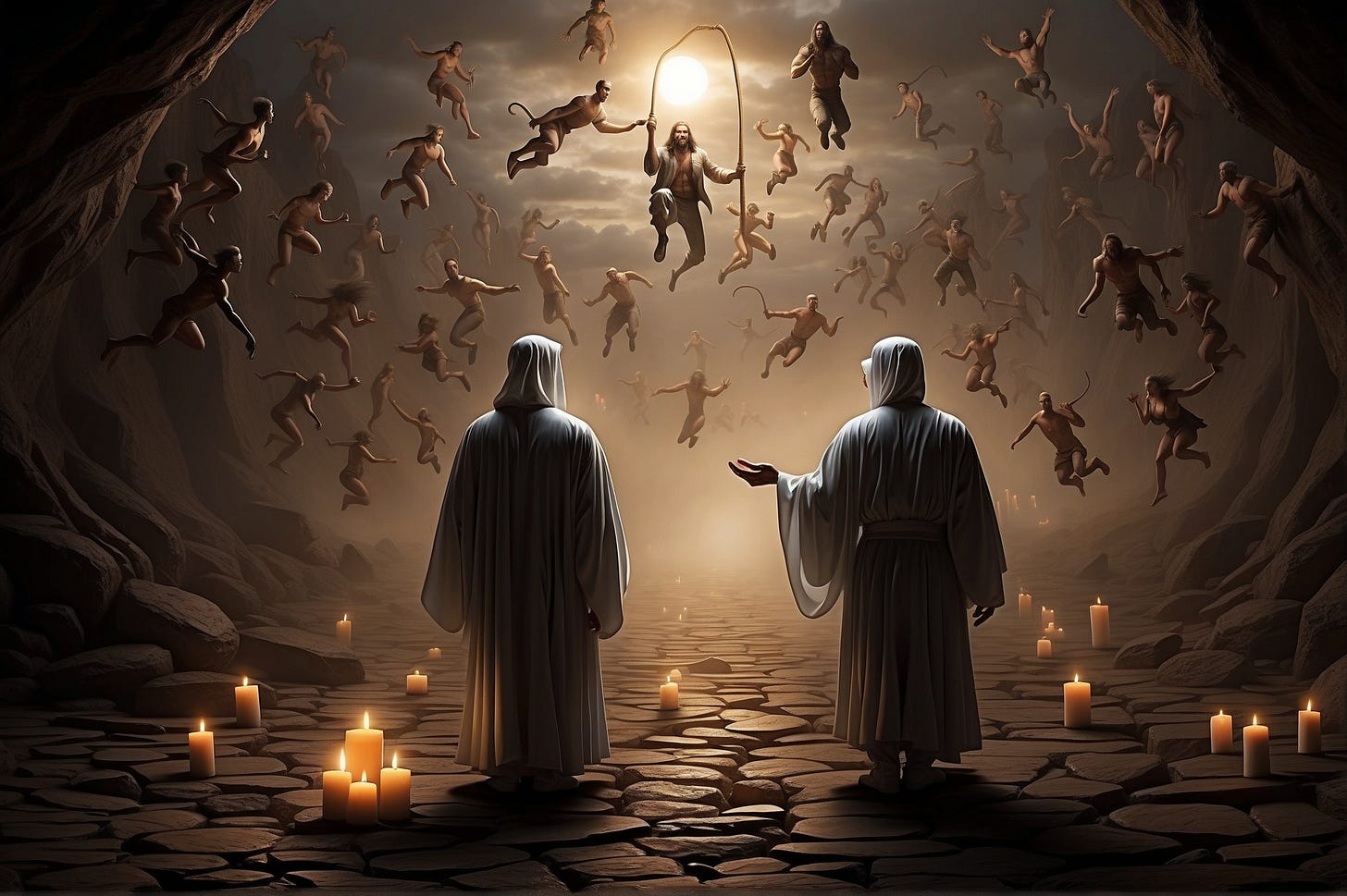
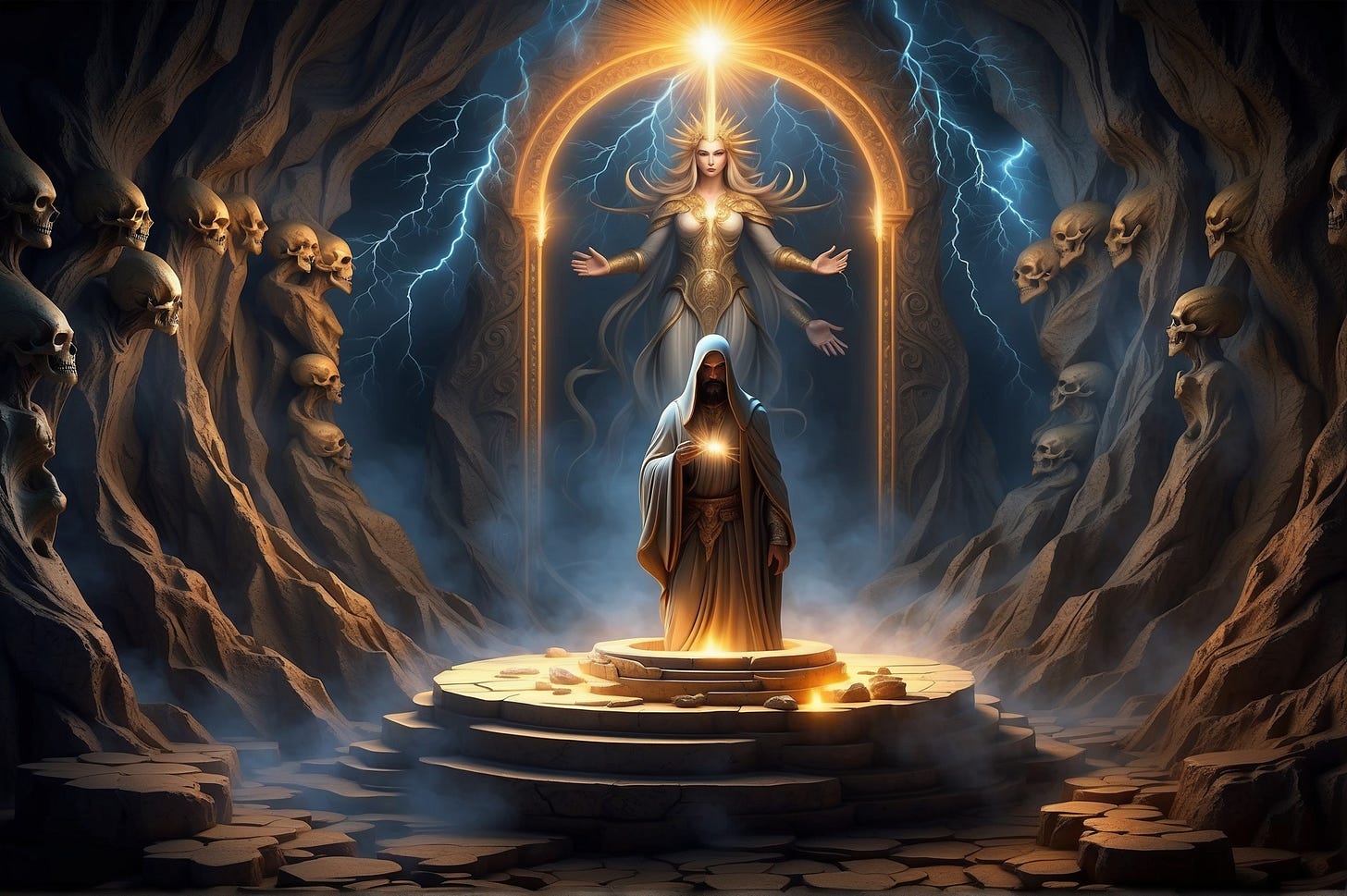
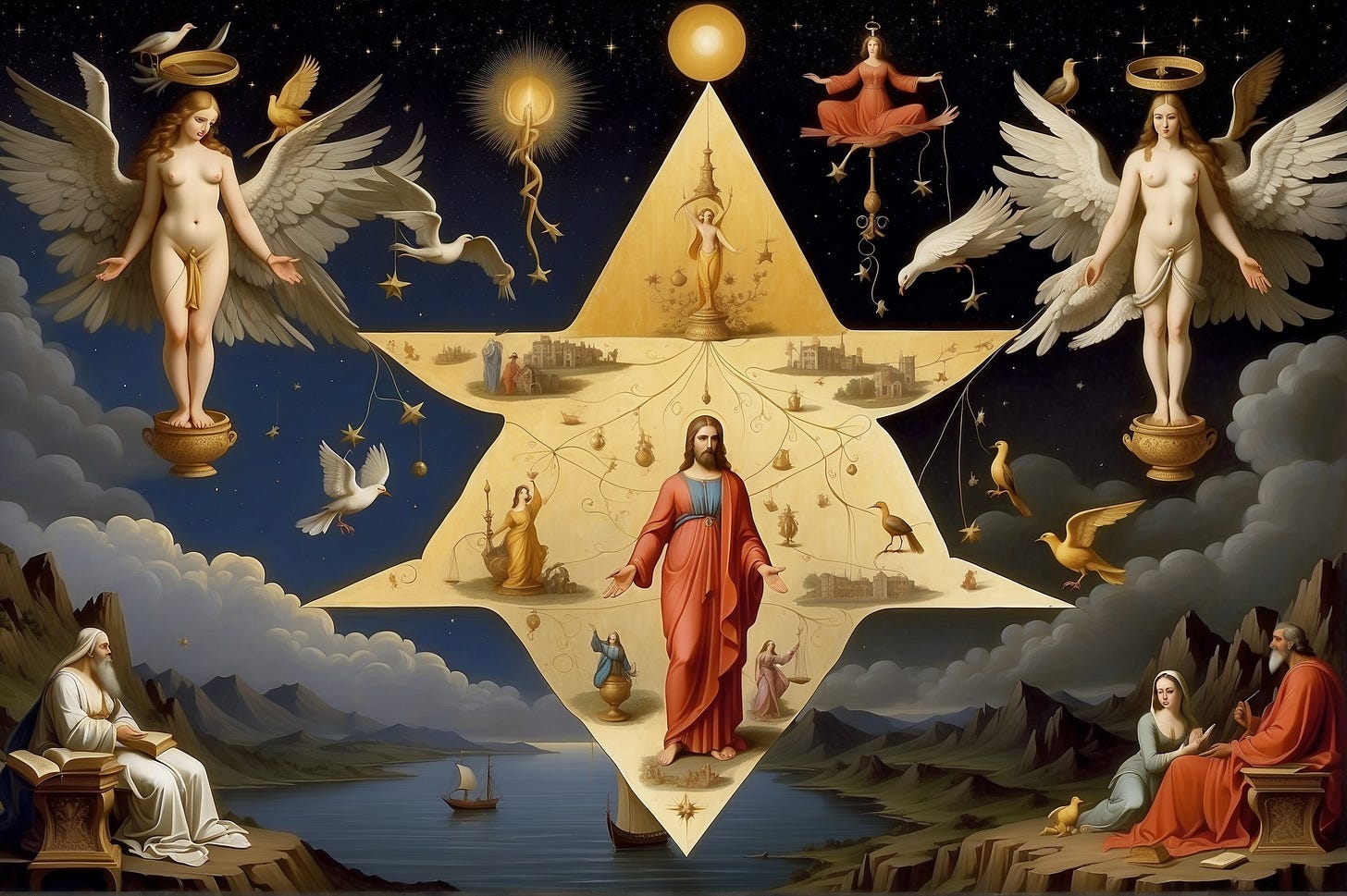

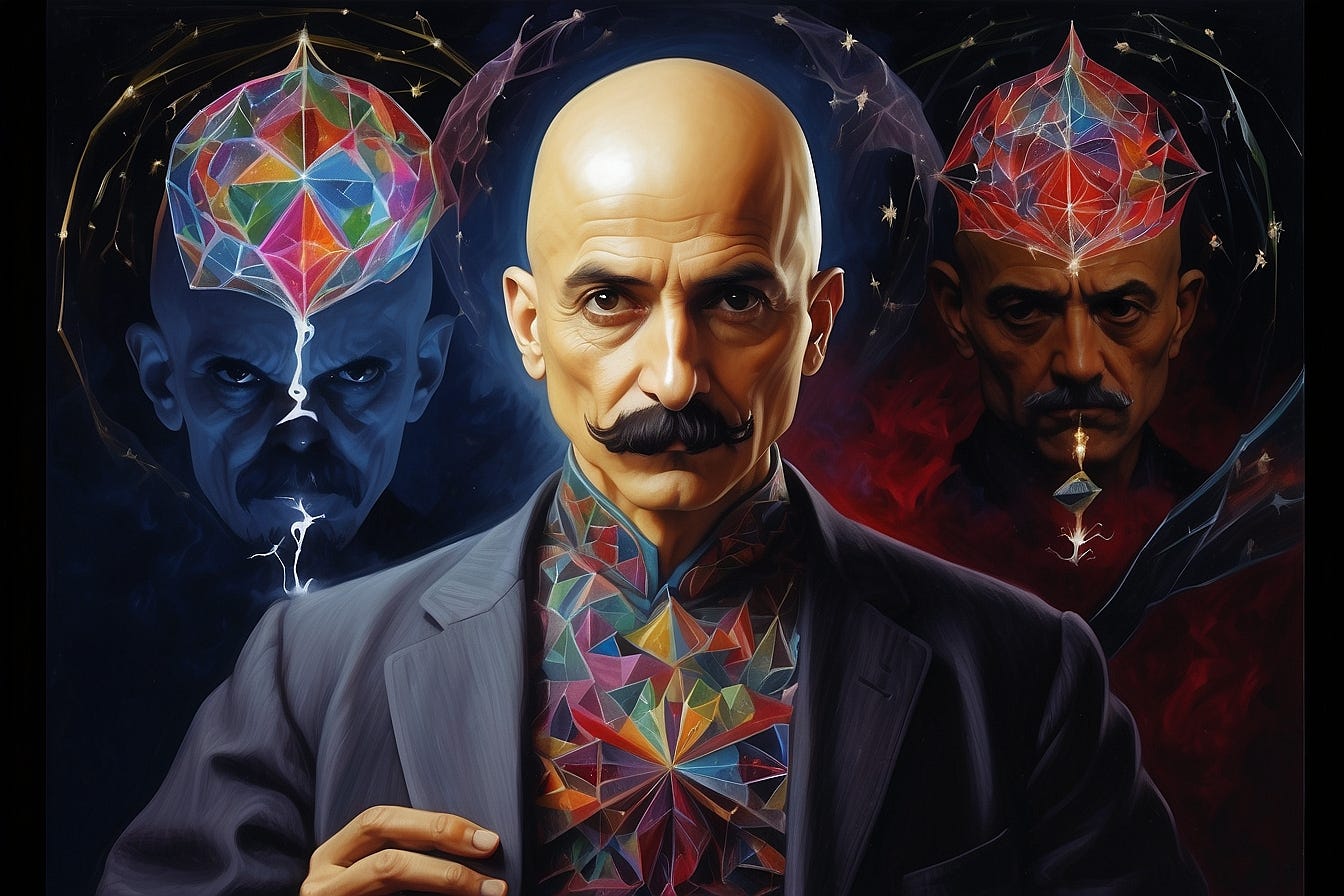
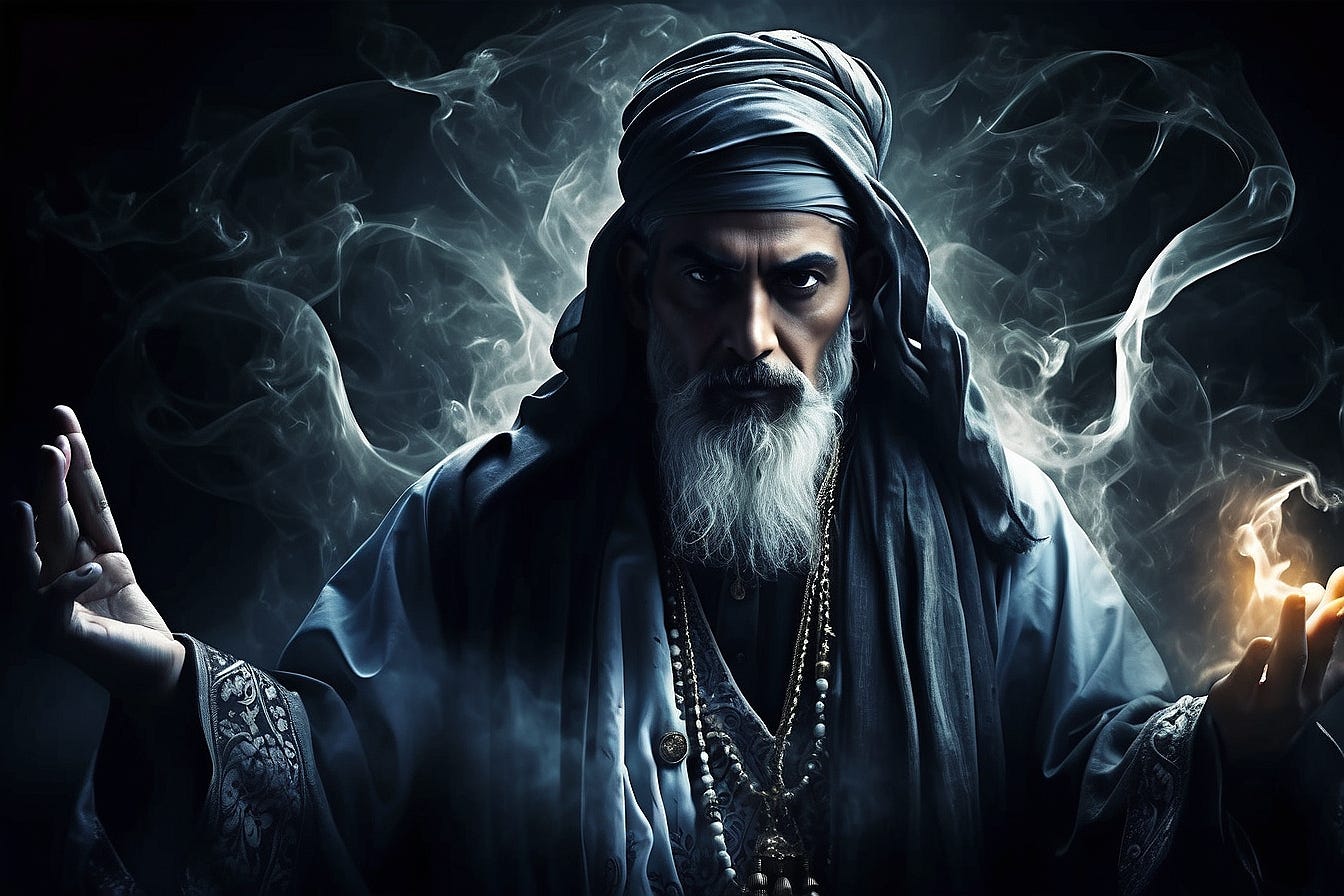
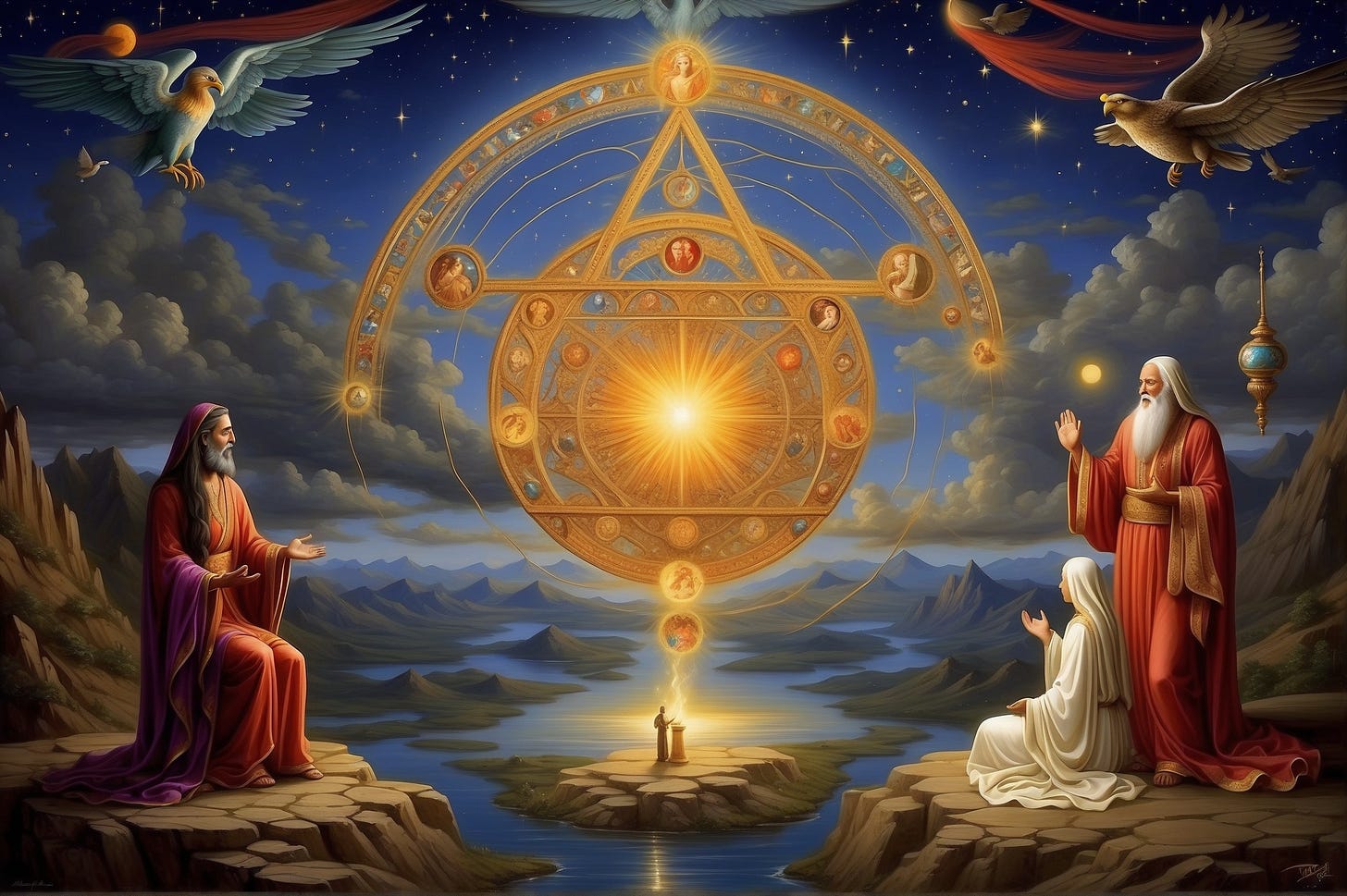
Very instructive approach to transcendence paths, that may help to understand some states in which one may fall.
Unconditional love is the fuel that powers our journey of transformation